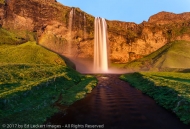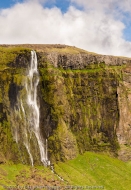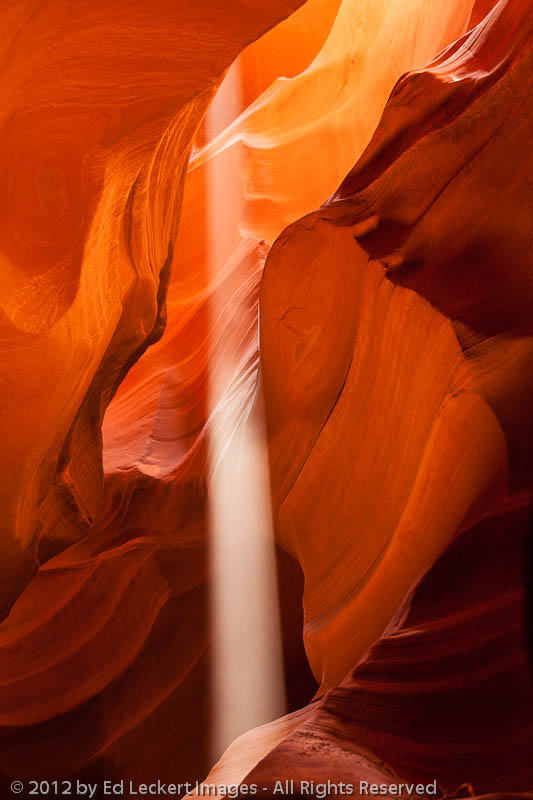


There’s just something about a slot canyon that’s irresistible. Faced with the choice of a tight, curvaceous space with high, colorful walls just barely far enough apart to squeeze through, or a large wash fit for an army invasion, there’s just no comparison. So last year when my friend Jeremy invited me to go along on a photo trip to the Southwest, including a side trip to the famous Antelope Canyon in Arizona, he didn’t have to ask twice.
While I’d like you to think that I risked life and limb getting these shots like the unfortunate canyoneer Aron Ralston of 127 Hours fame, the fact is that Antelope Canyon is the exact opposite of isolated. In fact, the average big city zoo on a warm sunny day has nothing on this place. The only real danger we were in was the risk of a rollover accident during the mad race to and from the entrance by our tour-guide!
The property is located on Navajo land and is run by Navajo Nation Parks & Recreation. Frankly, I think they do an amazing job of managing the over a million visitors this place sees every year. Several types of tours are offered, including a one hour tour for the general public and a two and a half hour photographer’s tour.
 Now ordinarily, in venues where there are tight spaces and crowds of families, such as zoos and museums, tripods would never be allowed. In fact, I was once in a spacious, deserted cemetery in Paris, and a guard came out of nowhere to inform me that I could take all the photos I wanted, but not with a tripod. (I still think he was a ghost, but I couldn’t prove it.)
Now ordinarily, in venues where there are tight spaces and crowds of families, such as zoos and museums, tripods would never be allowed. In fact, I was once in a spacious, deserted cemetery in Paris, and a guard came out of nowhere to inform me that I could take all the photos I wanted, but not with a tripod. (I still think he was a ghost, but I couldn’t prove it.)
Anyway, the Navajo guide services recognize that photography in a slot canyon without a tripod is futile, so they not only allow tripods, they encourage them. There’s even a sort of deference to the photography tours by the other tour guides. The non-photo guides are constantly reminding their clients to watch for tripods and not to get in the way of the photographer’s shots.
So how exactly do you photograph a slot canyon that’s literally stuffed with humans and end up with shots with no people? With the help of the guides, of course. The guides essentially choreograph the movement of their groups to coordinate with the photographers’ shooting sequences. We plant our tripods in the sand, interwoven to fit in the tight space, and the guides hold traffic for a minute or so while we get our shots. And a lot of the shots are aimed straight up, so we just grit our teeth during the twenty second exposures while hoards of kids stream past within inches of our tripod legs.
 I’m often asked if the colors in these photographs are real or if I colored the walls in post-processing. While virtually every photograph you see today has had some degree of color saturation boost, whether done automatically in-camera or manually during post-processing, and mine are no exception, these colors are fairly close to what you see with the naked eye. Think about it – that’s one reason the canyons are so popular with tourists. The red sandstone reflects sunlight over and over again as it trickles deep down into the canyon, and with each bounce off the wall, the light becomes more intensely colored. It starts off as a bright orange near the top and turns to a deep, rich purple near the floor. It truly is an amazing thing to see. And the gorgeous curves in the sandstone created by flash floods over the years make this place a true photographer’s paradise.
I’m often asked if the colors in these photographs are real or if I colored the walls in post-processing. While virtually every photograph you see today has had some degree of color saturation boost, whether done automatically in-camera or manually during post-processing, and mine are no exception, these colors are fairly close to what you see with the naked eye. Think about it – that’s one reason the canyons are so popular with tourists. The red sandstone reflects sunlight over and over again as it trickles deep down into the canyon, and with each bounce off the wall, the light becomes more intensely colored. It starts off as a bright orange near the top and turns to a deep, rich purple near the floor. It truly is an amazing thing to see. And the gorgeous curves in the sandstone created by flash floods over the years make this place a true photographer’s paradise.
So next time you’re anywhere near northern Arizona, check out Antelope Canyon. The tour services operate out of the city of Page, where you’ll meet your guide and hop in a vehicle that should have given it up years ago. Better make reservations, though, and be sure to hold on on your way to the canyon!

thanks for sharing Ed. always look forward to your post.
-myra
I love these!! Absolutely gorgeous!!
Thanks, guys! I try to keep it real!
The image with the ray of light is missing the holy grail. Did you modify that image to keep the location secret?
The holy grail was in the shop getting polished that day, Lee. 😉
But seriously, you bring up an interesting point. All of my images are geotagged, meaning that I store GPS coordinates in the metadata of each image. Currently you would need to find the image in my Flickr Photostream to see this information or to view a map of the shoot location, but future enhancements to this site will make this and other metadata more accessible.